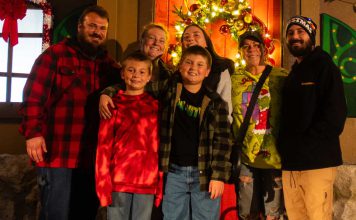Last fall, I was a part of a group of volunteers that visited
the remotest part of Henry Coe State Park.
Last fall, I was a part of a group of volunteers that visited the remotest part of Henry Coe State Park. Now and then, we get together to install signs at unmarked trail intersections to help direct hikers in the park. On this particular occasion, we weren’t going to install any signs but were hoping to find a seldom used and overgrown portion of the Mt. Stakes trail that drops down into the Pinto Creek drainage near the northeast boundary of the park.
From the park entrance on Coyote Creek near Gilroy Hot Springs, we drove more than two hours through the park to reach the trailhead. By the time we got there, we were closer to the Central Valley than the Santa Clara Valley; a part of the park rarely seen by visitors. On our hike, we climbed 2,000 feet, dropped 1,000 feet, found the trail, lost the trail and found it again. At the end of the day, back in the car, exhausted, heading home, someone suggested a short side trip to see the San Antonio Valley. I had heard it was a special place but had never had the chance to see it.
My surprise and the sense of awe I felt as we dropped into that valley were overpowering. It was as though I had rounded a corner on the moon and discovered the Garden of Eden. The steep, deep chaparral-covered corrugations of Coe Park’s east side are interrupted here by a magnificent open grassland, lush with wildflowers and meandering creeks. Small rounded knolls and broad meadows replaced steep ridges. Open stands of Gray Pines and Blue Oaks replaced flesh-tearing chaparral. Seeing such a gentle, open oasis amid this rough country was a breathtaking surprise.
The powerful impression made on me that evening was heightened by the soft light of dusk, and as if that weren’t enough, a herd of 25 or so tule elk who loped across the valley, keeping a comfortable distance from us motorized intruders. A backpacking buddy and I have a joke we repeat when we see such over-the-top scenery – “Must be a Disney project; God wouldn’t go this far.”
Since that evening, my response to that first view of San Antonio Valley keeps coming back to me. It was so basic, so fundamental that it was more (or less) than intellectual, it was instinctual. I could feel my DNA quiver. In that instant, I was connected to our primitive past. The lessons learned by our ancient ancestors, hard-wired into our genes through countless generations of natural selection, percolated into my consciousness right then. More than just a pretty place, I saw safety from predators in the open forest of the knolls. I saw hunting grounds and vital water in the broad valley. Here was safety, food and water; basic items for survival in primitive times. I recognized this not by reasoning, but by instinct.
Researchers corroborate the notion that many such responses are hard-wired, not consciously reasoned. They point to landscape paintings from past centuries. They are predominantly views from elevated locations overlooking open, watered plains where one can safely watch for dangerous predators or nourishing prey. Almost universally, people see these landscapes as beautiful because, somewhere in our cellular memory, we know these environments offer the best chance for survival. Modern technology has eliminated our need for these survival skills. When I saw some acorn grinding holes in a rock outcropping by a creek on the way home, I was reminded that it has been a very short time since we stopped needing these skills. In our genes, we still carry this knowledge with us.
We take a lot of pride in our intellectual prowess. We imagine that our responses and reactions to things are carefully considered, thoughtfully reasoned. Raising children and getting older have convinced me that we are more tied to our knuckle-dragging ancestors than we care to admit. We are more hard-wired instinct and less clever analyst than we flatter ourselves to be. On the evening that I first saw the San Antonio Valley, I was excited to realize that I was sharing some basic “knowing” with those 25 elk grazing there. I liked the San Antonio Valley for the same reason they did. I knew what they knew.
The sun set over the valley, draining the muted colors from this idyllic place. We turned for home resolving to return in the spring with the signs for our newfound trails and stay a couple of nights to explore and enjoy the San Antonio Valley. Then we were quiet. Each of us changed a little.













